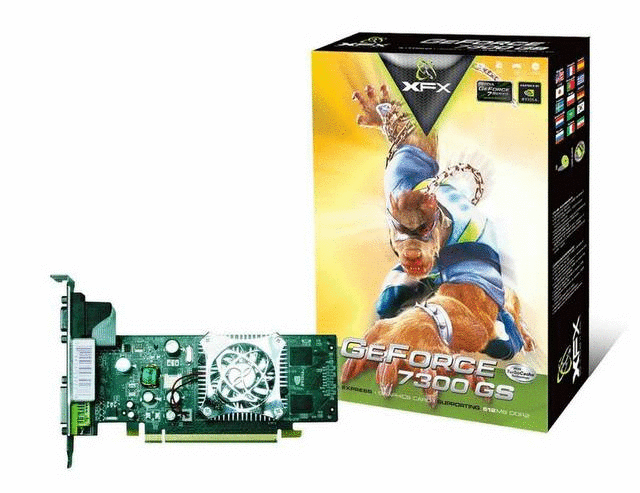GeForce 7300 GS
The GeForce 7300 GS is based on the G72 chip. The main difference between it and NV44, the chip on which the NVIDIA GeForce 6200 series cards were created, is a more subtle technical process. Switching chip production to 90 nm process technology allowed us to significantly raise the bar for available frequencies, and as a result we have 550 MHz against 350 before. NVIDIA didn't change anything in the chip configuration - the same 3 vertex and 4 pixel pipelines and 4 texture units. We increased the width of the memory bus from 32 bits to 64, compared to the NVIDIA GeForce 6200 TC series, which seemed quite logical due to the complexity of processed applications and the increase in information flows.

The main feature of the video card was the use of TurboCache technology. We have already talked about this technology earlier. Let's just briefly recall that the use of TurboCache technology allows you to reduce the amount of memory installed on the card by using the computer's system memory. The technology is used only to create low-end cards, since the delays when using the PCI-Express system bus instead of its own memory bus are greater, but this approach allows you to reduce the number of installed memory chips on the card, thereby reducing its cost.
Specifications NVIDIA GeForce 7300 GS
| Name | GeForce 7300GS |
| Core | G72 |
| Process technology (µm) | 0.09 |
| Transistors (million) | 112 |
| Core frequency | 550 |
| Memory frequency (DDR) | 405 (810) |
| Bus and memory type | GDDR2/3 64 Bit |
| Bandwidth (Gb/s) | 6.5 |
| Pixel pipelines | 4 |
| TMU per conveyor | 1 |
| textures per clock | 4 |
| textures per pass | 4 |
| Vertex conveyors | 3 |
| Pixel Shaders | 3.0 |
| Vertex Shaders | 3.0 |
| Fill Rate (Mpix/s) | 2200 |
| Fill Rate (Mtex/s) | 2200 |
| DirectX | 9.0c |
| Anti-Aliasing (Max) | SS&MS - 8x |
| Anisotropic Filtering (Max) | 16x |
| Memory | 128-256 |
| Interface | PCI-E/AGP |
| RAMDAC | 2x400 |



